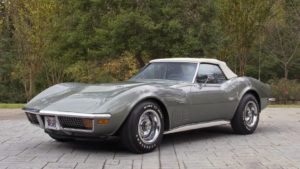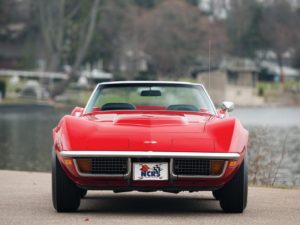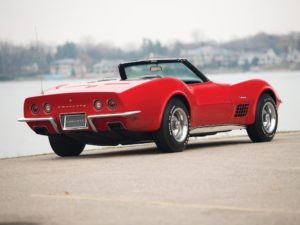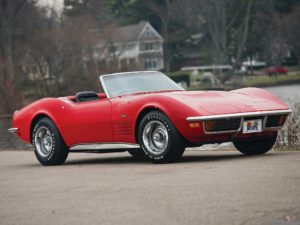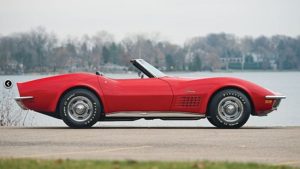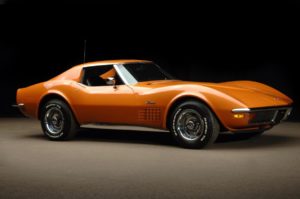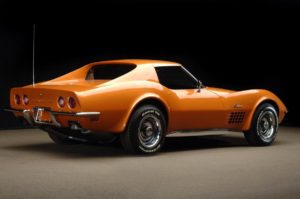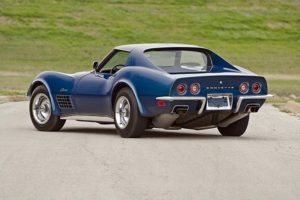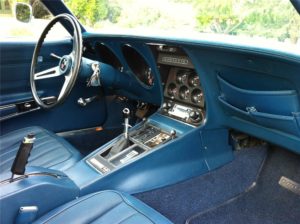Although its arrival was anticipated by consumers and critics alike, there were virtually no physical or mechanical changes made to the 1972 Corvette from the previous year. In fact, the most dramatic “changes” made to the current model year involved items that were no longer available to prospective owners when ordering a new Corvette.
Pricing: $5,533.00 (Coupe), $5,296.00 (Convertible)
Engine options: 350ci – 200HP Engine (standard), 350ci – 255HP Engine, 454ci – 270HP Engine (n/a in California)
Transmission: 4-speed manual (standard), 4-speed manual (optional), 3-speed Turbo Hydra-Matic automatic (optional)
Top speed:
Units Produced: 27,004
Available Colors: Sunflower Yellow, Pewter Silver, Bryar Blue, Elkhart Green, Classic White, Mille Maglia Red, Targa Blue, Ontario Orange, Steel Cities Gray, War Bonnet Yellow
Highlights of the year:
Previously, consumers looking to purchase a Corvette had had the option of including the 454 cubic inch big block LS-6 either on its own or as part of RPO ZR2, but because of incredibly poor sales numbers the previous year (only 188 Corvettes with the LS6 engine and a meager 12 Corvettes equipped with RPO ZR2 were sold), GM felt that the eradication of the engine was a necessity. To that end, only three engines were listed for the Corvette in 1972, which made it the smallest selection since the 1956 model.
All of the engines offered in 1972 suffered a loss in power because of the mandatory inclusion of emissions-lowering tuning that year. Furthermore, as was becoming common amongst all automotive manufacturers, GM was now measuring engine outputs in the new SAE “net” measure for the 1972 model year. The choice to use the net numbers instead of the “gross” horsepower measurements was the result of power losses caused by mandatory equipment such as the water pump, alternator, power steering pump, mufflers, and air cleaner. While the ratings were universally lower, they were also more realistic.
The base engine, designated ZQ-3, was rated at a conservative 200 brake horsepower. The LT-1 was rated at 255 horsepower and the LS-5 was rated only slightly higher at 270 horsepower.
Beyond the realignment of GM’s engine program, there were virtually no other notable changes made to the 1972 Corvette with the following exceptions: For 1972, the fiber-optic light monitoring system was dropped and an all-new center console was designed to take its place.
Additionally, Chevrolet standardized the horn-honking burglar alarm, which was now included on every new model. The alarm system could be armed and disarmed via a lock cylinder at the rear of the car
While there were virtually no appearance changes to the 1972 Corvette, the model year did mark the “end of an era” for the third-generation Corvette. It would be the last model year to feature both front and rear chrome bumpers, a bright egg-crate grill, side-fender grills (later models do have functional vents and some have vent trim), and a removable rear-window (this last had been a standard feature from 1968-1972.
Photos of the 1972 Corvette:
Sources:
https://www.corvsport.com/1972-c3-corvette/
https://www.corvsport.com/1972-c3-corvette-image-gallery/
